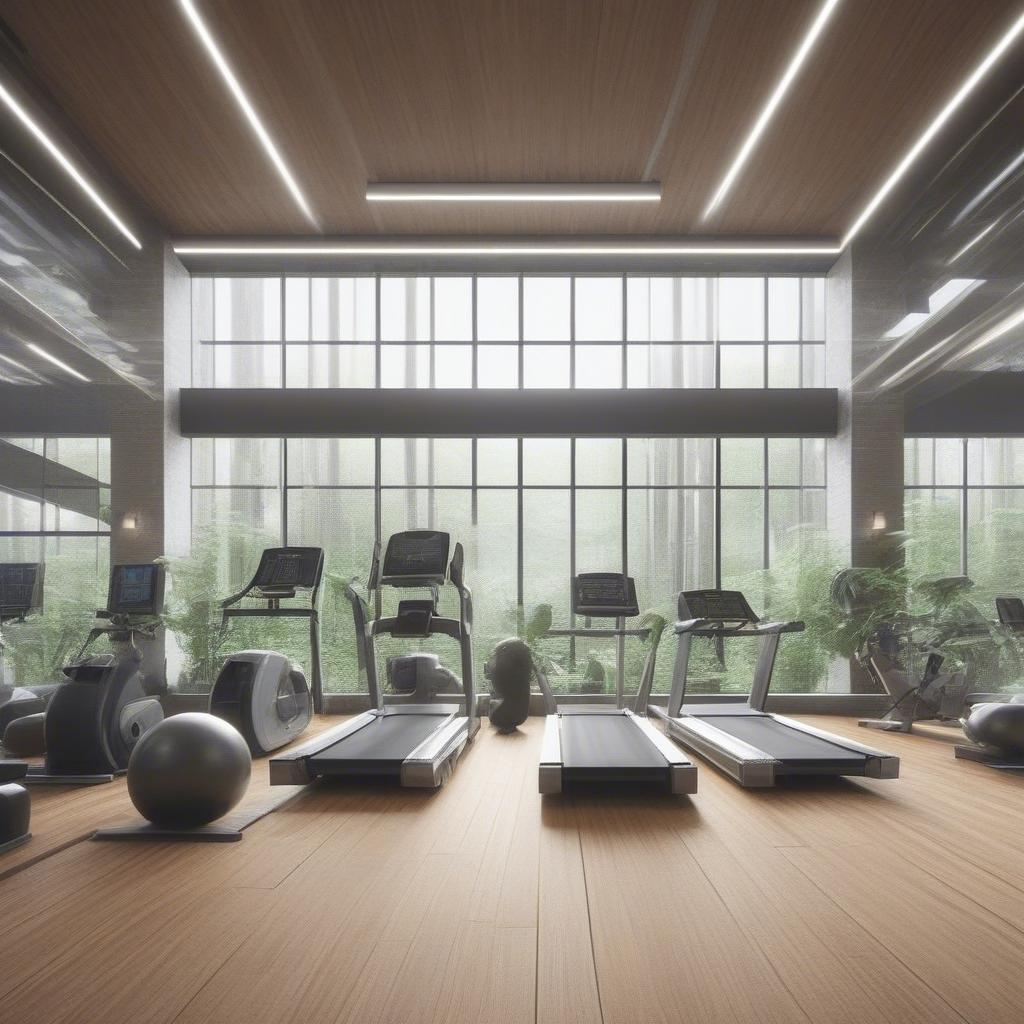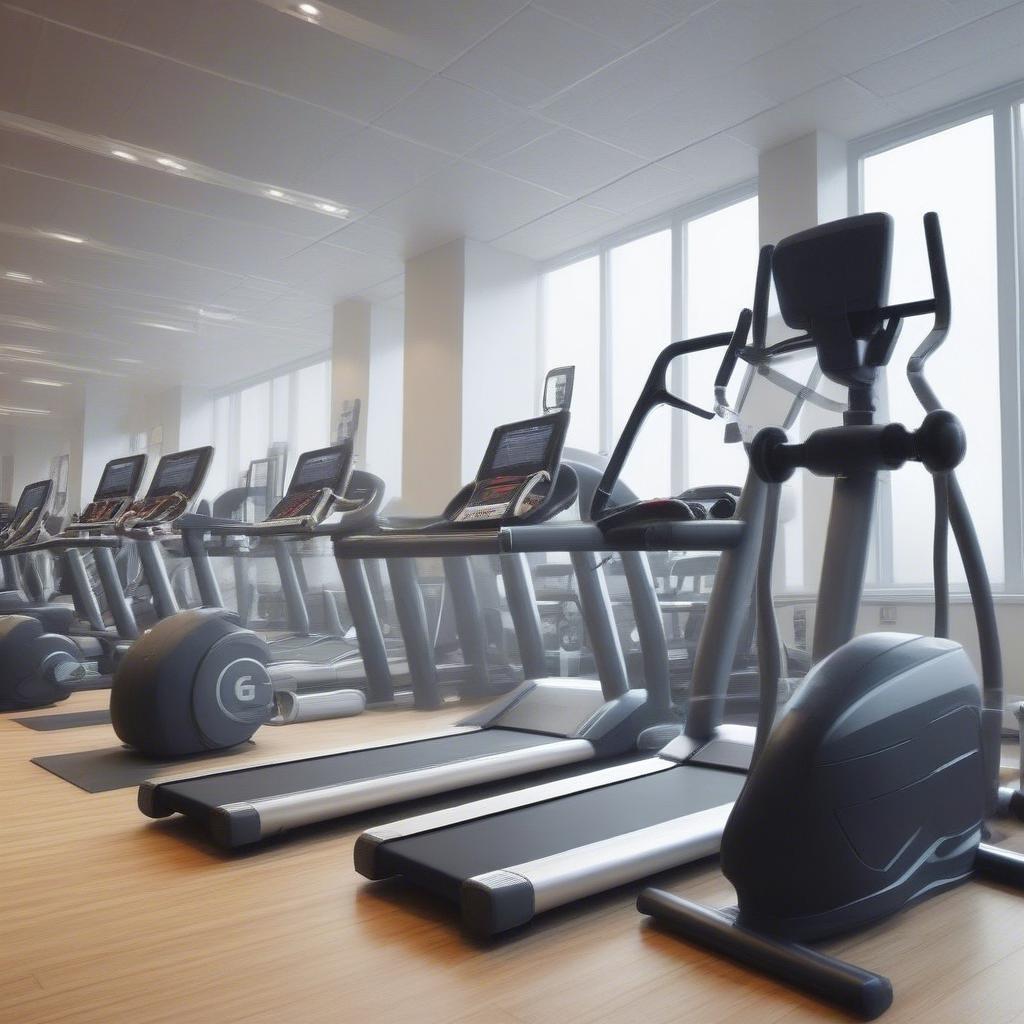
How to Achieve LEED Certification for Your Gym: A Comprehensive Guide to Sustainable Fitness
The fitness industry is booming, but it’s also facing growing scrutiny for its environmental impact. As a gym owner, you have a fantastic opportunity to not only promote health and wellness but also champion sustainability. That’s where LEED certification for your gym comes in. This comprehensive guide will walk you through everything you need to know, from understanding what LEED is to implementing the changes necessary for certification.
What is LEED Certification and Why Does it Matter for Your Gym?
LEED, or Leadership in Energy and Environmental Design, is a globally recognized green building certification program. It’s developed by the U.S. Green Building Council (USGBC) and provides a framework for creating healthy, highly efficient, and cost-saving green buildings. Why should this matter to your gym? Let’s break it down:
The Environmental Impact of Traditional Gyms
Traditional gyms often consume a significant amount of energy and resources. Think about the constant use of lighting, climate control, and high-energy equipment, not to mention the waste generated from single-use plastics and cleaning supplies. This contributes to a larger environmental footprint that, as a responsible business owner, you have the power to mitigate.
The Business Benefits of Going Green
Beyond environmental responsibility, achieving LEED certification offers a range of tangible business benefits:
- Enhanced Brand Reputation: Consumers are increasingly drawn to businesses that demonstrate a commitment to sustainability. A LEED-certified gym sends a powerful message that your brand is aligned with their values. This elevates your gym above the competition.
- Increased Customer Loyalty: Members who care about the environment are more likely to choose a gym that reflects their principles. They’ll not only stick with you longer, but also become advocates for your sustainable business.
- Reduced Operational Costs: LEED promotes efficiency, leading to lower energy and water bills. Over time, these savings can significantly impact your bottom line.
- Attracting Investors and Partners: For potential investors and partners, a commitment to sustainable business practices is often a crucial decision-making factor.
- Healthier Environment: LEED focuses on creating a space that is healthier for your members and staff. This will help you increase your retention rate.
Who Should Pursue LEED Certification?
- New Gyms: If you’re planning to build a new gym, incorporating LEED standards from the start is the most efficient approach.
- Existing Gyms: While more challenging, retrofitting an existing gym for LEED certification is entirely achievable and highly rewarding.
- Franchises: Aligning with the sustainable business goals of a LEED certification can set your franchise apart, attracting more customers and like-minded franchisees.
Understanding the LEED Certification Process: A Step-by-Step Guide
The LEED certification process is rigorous but straightforward. Here’s a breakdown of the key steps:
Step 1: Choose the Right LEED Rating System
Different types of buildings are assessed under different LEED rating systems. For a gym, you’ll likely use one of these:
- LEED for Building Design and Construction (BD+C): For new construction and major renovations.
- LEED for Interior Design and Construction (ID+C): For interior fit-outs of commercial spaces.
- LEED for Existing Buildings: Operations & Maintenance (O+M): For existing buildings seeking ongoing improvement.
Choosing the right system is critical. BD+C is suitable if you’re building a new facility or doing a significant overhaul. If you’re mainly renovating the interior of an existing space, ID+C may be a better option. For an already operating gym that wants to focus on sustainability in its daily operations, O+M is the way to go.
Step 2: Assemble Your LEED Team
A strong team is crucial for a successful LEED project. This team should include:
- LEED Consultant: An experienced consultant can guide you through the process, helping you set realistic goals and maximize your chances of certification.
- Architect or Interior Designer: They’ll be responsible for incorporating green design principles into your space.
- Contractor: They need to be familiar with sustainable building practices and materials.
- Gym Management: The day-to-day management team will play a vital role in implementing sustainable practices.
- Sustainability Champion: A designated person on your team who is passionate about sustainability and can keep the project on track.
Step 3: Set Your Goals and Select LEED Credits
The next step is to define your goals and choose which LEED credits you want to pursue. Credits are awarded for specific sustainable strategies and are grouped into the following categories:
- Location and Transportation (LT): Encourages development near transit options and alternative transportation.
- Sustainable Sites (SS): Focuses on reducing the impact of construction on the surrounding environment.
- Water Efficiency (WE): Promotes water conservation both inside and outside the building.
- Energy and Atmosphere (EA): Addresses energy efficiency, renewable energy use, and greenhouse gas emissions.
- Materials and Resources (MR): Encourages the use of sustainable building materials and waste reduction.
- Indoor Environmental Quality (EQ): Promotes a healthy and comfortable indoor environment.
- Innovation (IN): Allows for the implementation of innovative and unique sustainable strategies.
- Regional Priority (RP): Addresses specific regional environmental concerns.
Choose a mix of credits that are feasible and align with your project goals. It’s crucial to prioritize credits that offer the best return on investment for your specific gym.
Step 4: Document and Submit Your Application
During the design and construction phase, gather all the documentation required to prove your compliance with the selected LEED credits. The LEED Online platform is where you will submit your application and supporting documentation for review. This stage requires meticulous attention to detail.
Step 5: Certification Review and Award
After submitting your application, it will be reviewed by the USGBC. They may require additional information or clarification. Once all requirements are met, your gym will be awarded the certification at the relevant level: Certified, Silver, Gold, or Platinum.
Practical Strategies for Earning LEED Credits for Your Gym
Now, let’s dive into actionable strategies you can implement within each LEED credit category:
Location and Transportation (LT)
- Proximity to Public Transportation: Select a location that is easily accessible by public transport, biking, or walking.
- Bike Racks and Showers: Provide secure bike storage and showers for staff and members to encourage alternative transportation.
- Electric Vehicle Charging Stations: Install EV charging stations to promote the use of electric vehicles.
- Preferred Parking: Offer priority parking spaces for carpoolers and low-emitting vehicles.
Sustainable Sites (SS)
- Landscaping: Use native and drought-resistant plants that require less water and maintenance.
- Stormwater Management: Implement strategies to manage stormwater runoff, such as rain gardens or permeable pavement.
- Light Pollution Reduction: Use outdoor lighting that minimizes light pollution.
- Heat Island Reduction: Incorporate reflective roofing materials or green roofs to reduce the urban heat island effect.
Water Efficiency (WE)
- Low-Flow Fixtures: Install low-flow toilets, faucets, and showerheads.
- Water-Efficient Equipment: Use water-efficient washing machines and dishwashers.
- Water Metering: Install separate water meters to track water usage for different areas of your gym.
- Waterless Urinals: Consider using waterless urinals to conserve water.
Energy and Atmosphere (EA)
- Energy-Efficient Lighting: Use LED lighting to reduce energy consumption and long-lasting bulbs.
- High-Efficiency HVAC Systems: Invest in high-efficiency heating, ventilation, and air conditioning (HVAC) systems.
- Smart Thermostats: Install smart thermostats to optimize temperature control and reduce energy usage.
- Renewable Energy: Explore renewable energy options, such as solar panels, to offset energy consumption.
- Energy Audits: Conduct regular energy audits to identify areas for improvement and energy consumption.
Materials and Resources (MR)
- Recycled Content: Use building materials that have recycled content, such as recycled steel, carpet, and flooring.
- Locally Sourced Materials: Purchase materials that are sourced within a specific radius to reduce transportation emissions.
- Sustainable Wood: Use wood that is certified by the Forest Stewardship Council (FSC).
- Waste Management: Implement a comprehensive waste management system with recycling and composting programs.
- Reduce Single-Use Plastics: Replace single-use plastics with reusable alternatives, such as refillable water bottles and cleaning product concentrate.
Indoor Environmental Quality (EQ)
- Air Filtration: Install high-quality air filtration systems to improve indoor air quality.
- Low-VOC Materials: Use paints, adhesives, and sealants with low volatile organic compound (VOC) emissions.
- Daylighting: Maximize natural daylight to reduce the need for artificial lighting.
- Acoustic Design: Design your space to minimize noise pollution and improve acoustics.
- Biophilic Design: Incorporate elements of nature into the design, such as plants and natural materials, to enhance the indoor environment and improve member’s experience.
Innovation (IN)
- Unique Sustainability Strategies: Identify and implement innovative sustainable strategies that are not covered by standard LEED credits.
- Educational Programs: Develop educational programs to engage your members and staff in sustainability efforts.
- Community Outreach: Partner with local organizations to promote sustainability within your community.
Regional Priority (RP)
- Address Regional Concerns: Prioritize LEED credits that address specific environmental concerns in your geographic area.
Examples of Sustainable Practices in a LEED-Certified Gym
Here are a few real-world examples of how gyms are implementing sustainable practices:
- Using reclaimed wood for wall paneling and flooring.
- Installing motion-sensor lighting in locker rooms and hallways.
- Providing reusable water bottles for members and refilling stations.
- Offering eco-friendly cleaning products throughout the gym.
- Partnering with local farms to provide fresh, healthy snacks at the juice bar.
- Hosting sustainability workshops for members and staff.
- Installing solar panels on the roof to generate renewable energy.
- Implementing a textile recycling program for old gym apparel.
The Impact of LEED Certification on Your Marketing Strategy
Having a LEED certification is a great marketing tool that you can use to show your members and your community your commitment to the environment. Here are a few examples to highlight this:
- Display the LEED plaque: Proudly display your LEED certification plaque to show members and visitors your commitment to sustainability.
- Promote Your Achievements: Share your achievements on social media, your website, and in press releases to attract more members and improve your brand image.
- Host Tours: Organize guided tours of your gym to highlight the sustainable features.
- Sustainability-Focused Events: Create sustainability-themed events to engage with your community and promote environmental awareness.
- Member Benefits: Offer discounts or incentives for members who engage in your sustainability efforts.
- Partnerships: Collaborate with like-minded companies that also have a green initiative.
Overcoming Common Challenges in Achieving LEED Certification
While pursuing LEED certification is highly rewarding, there are some common challenges you may face:
- Initial Costs: The upfront costs of implementing sustainable strategies can be higher, but the long-term cost savings and business benefits outweigh them.
- Time Commitment: LEED projects require time and dedication. Developing a clear timeline with realistic goals is crucial to avoid setbacks.
- Documentation: Gathering and organizing the necessary documentation can be time-consuming. Utilizing tools and checklists can streamline the process.
- Team Coordination: Effective communication and coordination between team members is vital for a smooth process. Assign a sustainability champion who can coordinate all efforts.
Learn Business: Your Partner in Achieving Sustainable Success
Navigating the complexities of LEED certification can be daunting, but you don’t have to do it alone. Learn Business is your dedicated partner, offering a range of services designed to support your gym’s journey towards sustainability:
Tailored Templates for LEED Certification
We understand that each gym has unique needs. That’s why we offer a comprehensive library of tailored templates designed to streamline your LEED certification process. These templates cover essential areas like:
- Sustainable Materials Checklist: A guide for selecting eco-friendly materials for construction or renovations.
- Waste Management Plan: A plan for reducing waste, promoting recycling and composting.
- Energy Audit Template: A checklist for energy auditing your gym and identifying areas of improvement.
- LEED Project Timeline: A detailed project timeline to help your team stay on track.
- Communication Plan: A structured way for your team to communicate effectively, including stakeholder updates and progress reports.
- Sustainable Procurement Policy: A guide for sourcing sustainable products and services.
Expert Guidance and Support
Our team of experienced sustainability professionals can provide the expert guidance and support you need every step of the way. Whether you need help choosing the right LEED credits, developing a comprehensive sustainability plan, or navigating the certification process, we’re here to help. We can assist you with:
- LEED Credit Selection: We’ll analyze your project and help you prioritize the most relevant LEED credits.
- Sustainable Strategy Development: We can help create a customized sustainability plan for your gym that meets your business and environmental goals.
- Documentation Assistance: We’ll help you gather and organize the necessary documentation for your LEED application.
- Training and Education: We provide training programs for your staff to ensure a clear understanding of sustainability practices.
Why Choose Learn Business?
- Customized Approach: We understand that every business is unique and offer tailored solutions.
- Expertise: We have a team of experienced professionals with a deep understanding of LEED and sustainability.
- Time-Saving Resources: Our templates and resources are designed to save you time and effort.
- Practical Solutions: We provide actionable strategies and practical solutions that you can implement immediately.
- Ongoing Support: We offer ongoing support throughout your LEED journey.
Conclusion: The Future is Green
Achieving LEED certification for your gym is more than just a badge of honor; it’s a commitment to a healthier planet and a more sustainable future. By embracing green fitness practices, you can enhance your brand reputation, attract and retain loyal members, reduce operating costs, and contribute to a more responsible fitness industry. With the right plan, resources, and support from partners like Learn Business, your gym can be a beacon of sustainability and inspire positive change in your community. Take the leap, embrace sustainability, and lead the way to a greener future for the fitness world.



Leave a Reply